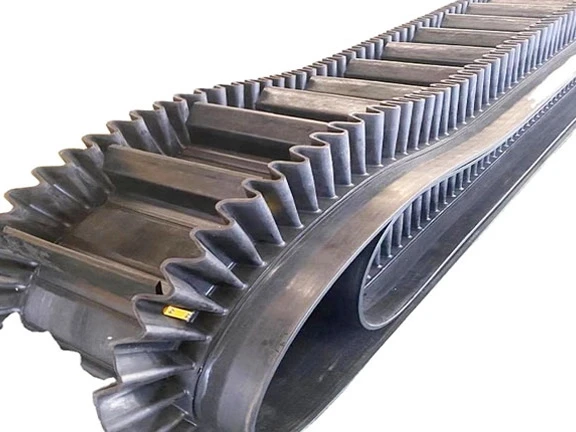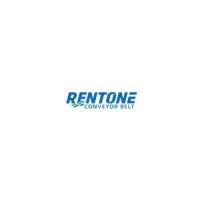The sidewall conveyor belt, also known as the steep incline conveyor belt, is ideal for conveying bulk materials at a large angle or vertical plane. The corrugated sidewall conveyor belt serves as a block to keep materials from falling or slipping. It is manufactured by the secondary vulcanization process to create high bonding strength between different components. The key parts of the sidewall conveyor belt include the base belt, sidewalls, and cleats. The base belt acts as the foundation of the side wall conveyor belt, the sidewalls are integral to the conveyor belt and run the entire length, and the cleats have T or TC type, which are used to transport materials in high capacity and steep angle applications.
Our company, one of the the most reliable sidewall conveyor belt manufacturers, can produce conveyor belts in corrugated shape to withstand high pressure and prevent extreme flexing, and can also provide customized sidewall conveyor belts to meet your needs. Our sidewall conveyor belt will be tested repeatedly and come out with high tensile strength, excellent abrasion resistance as well as strong adhesion before being delivered to customers.
Structure and Design of Sidewall Conveyor Belt
Base Belt: made of high tensile strength rubber or synthetic material. The base belt must be strong and flexible enough to withstand the tension and flexing around the pulleys and rollers of the conveyor system.
Sidewalls: Corrugated sidewalls are attached to the edge of the base belt to prevent material spillage and allow transportation at various inclines. These sidewalls are designed to flex and expand without losing their structural integrity.
Cleats: The cleats are arranged at regular intervals across the width of the belt to form pockets for holding and transporting material. These cleats vary in height and shape depending on the specific application requirements.
Covering Compounds: Rentone belts are covered with specialized compounds that enhance abrasion, heat and chemical resistance. These cover compounds ensure the reliability of the belts in harsh operating conditions.
Features of sidewall conveyor belt for sale
Prevent material falling and dropping
Superior flexibility and durability
Low elongation, high tensile strength
Excellent abrasion, impact, and tear resistance
Convey materials ranging from 0-90 degrees to save installation space
Easy to install and disassemble
Low energy consumption and investment cost
Key Advantages of Wholesale Sidewall Conveyor Belt
Reduced Spillage: The sidewalls and cleats help contain materials on the belt, reducing the risk of spillage during transport. This is especially beneficial in handling loose or granular materials.
Space Saving: The ability to transport materials vertically or at steep angles means sidewall conveyor belts require less horizontal space, making them ideal for use in confined areas or facilities with limited floor space.
Versatility in Material Types: These belts can be customized with various sidewall heights and cleat configurations to handle a wide range of materials, from fine powders to large, irregularly shaped items.
Cost Savings: By reducing the need for multiple conveyor systems to handle different elevation changes, sidewall conveyor belts can lower installation and maintenance costs.
Durability: Our sidewall conveyor belts for sale are made from robust materials that can withstand harsh operating conditions, including exposure to chemicals, extreme temperatures, and abrasive materials.
Applications of Wholesale Sidewall Conveyor Belt
Applications in Various Industries:
Mining and Quarrying: Transporting ores, coal, and aggregates in challenging terrains.
Agriculture: Efficient movement of grains, seeds, and fertilizers in storage facilities.
Construction: Handling materials like gravel, sand, and concrete in constrained environments.
Applications in the Logistics Industry:
Ports and Terminals: Facilitating efficient loading and unloading from ships to conveyors.
Waste Management: Enhancing waste handling efficiency on inclines or vertically.
Recycling Facilities: Sorting and transporting recyclable materials effectively.
Applications in the Environmental Protection Industry:
Power Plants: Moving fuel materials in confined spaces or steep angles.
Water Treatment Plants: Transporting sludge or sediment for processing and disposal.
If you are looking for a reliable conveyor belt manufacturer, please contact us.



